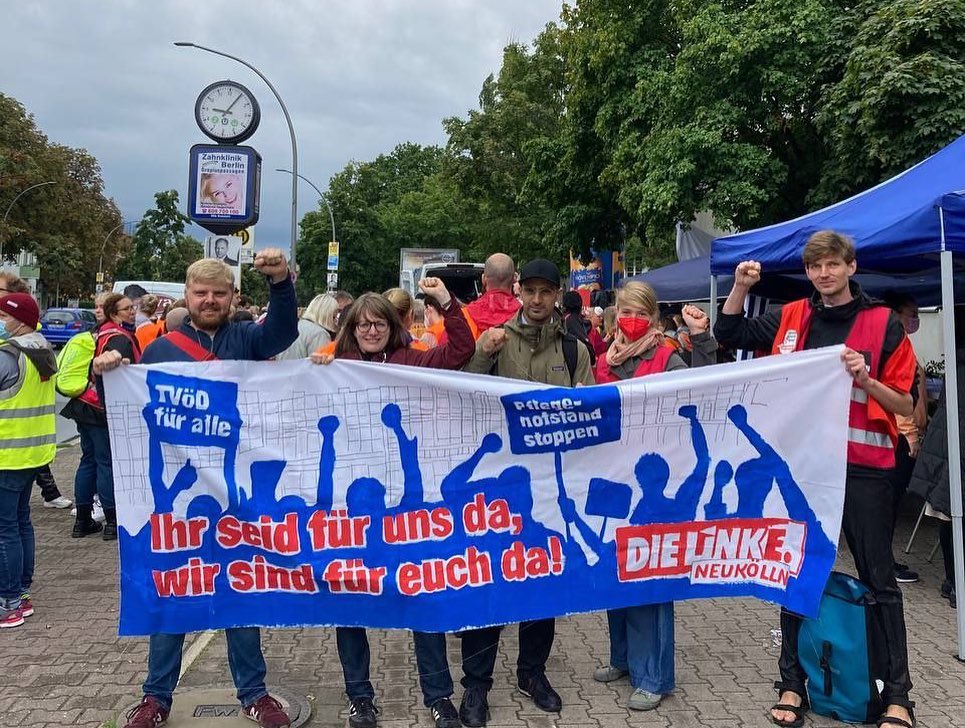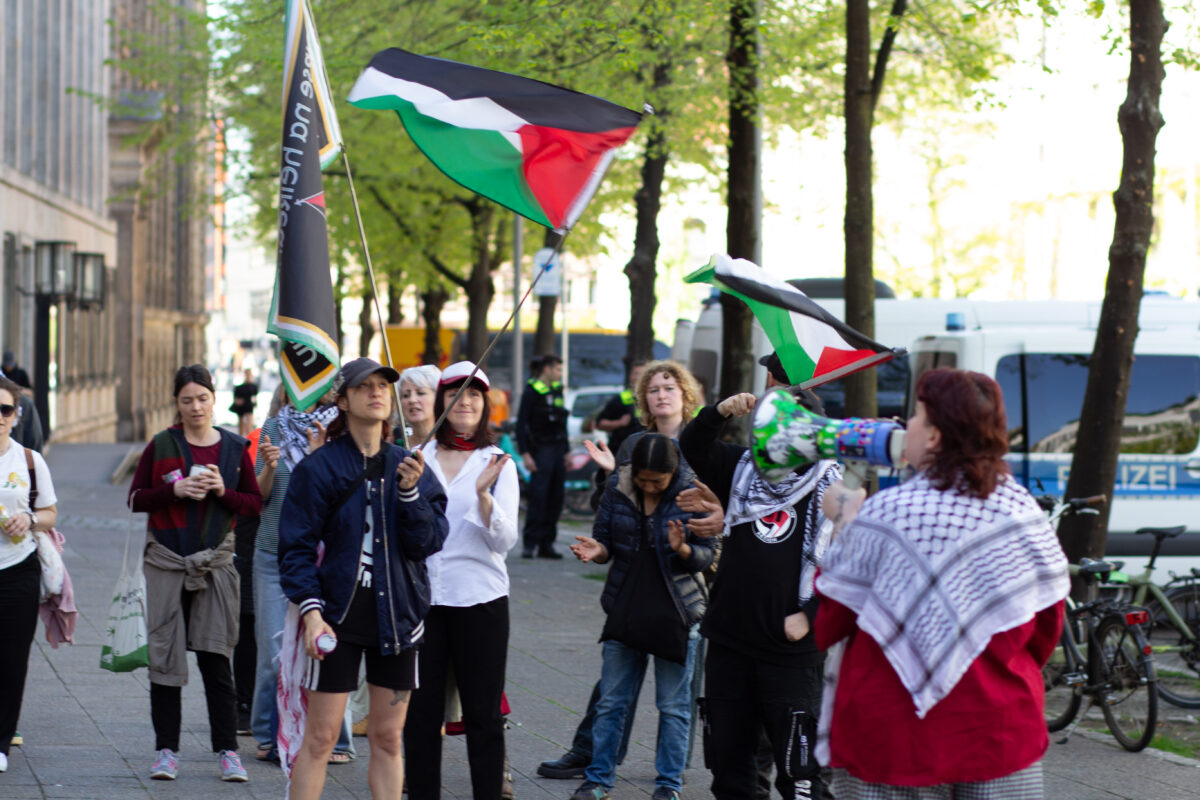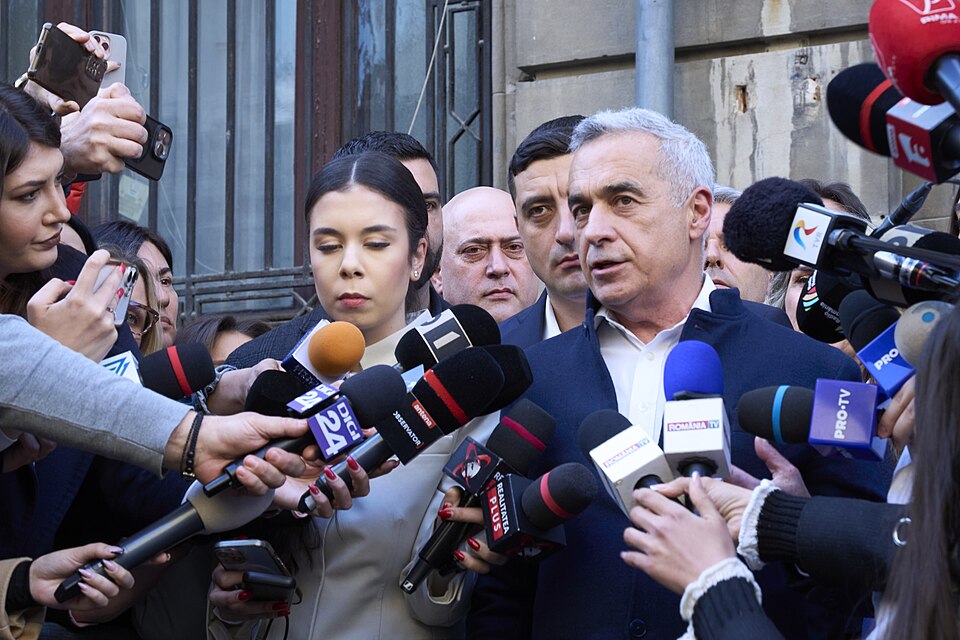The German elections of Sunday 26th September were dominated by the question of who would succeed Merkel as chancellor. The improbably bad performance of CDU/CSU candidate Armin Laschet enabled Olaf Scholz (SPD) to become the sudden favourite, without having a clear profile of his own. To the extent that DIE LINKE featured at all in the debates, the main issue was what positions the left party should give up to enable the election of a centre-left government.
The CDU/CSU lost 9 percentage points. With 24,1% of the vote, the Christian Democrats suffered their worst ever electoral defeat. The SPD won 5,2% against the long term trend and achieved their best result since 2005. The Greens gained 5,8 percentage points to land at their best result ever with 14,8%. The liberals of the FDP also won slightly and rose to 11,5% of the vote. The AfD lost 2,3 percentage points and fell to 10,3%. However, the AfD also managed to become the biggest party in most of Saxony, the southern half of Thuringia and the southern tip of Sachsen-Anhalt. DIE LINKE lost 4,3 percentage points and ended up below the election threshold of 5,0%, only returning to the Bundestag thanks to three direct mandates in Berlin and Leipzig.
The Centre Left
The victory of the SPD and the Greens indicates that many people are looking for change. The rise of the massive climate movement over the last years, in which over 600.000 people participated, electorally mostly played into the hands of the Greens. The SPD carried out a relatively left wing campaign despite their candidate Olaf Scholz, who was one of the architects of the neoliberal labour and welfare reforms under the Schröder government and a hardline mayor of Hamburg. This way the SPD could win 1,5 million voters (net) from the CDU/CSU and at the same time half a million from DIE LINKE.
For DIE LINKE, the direction of the campaign turned a precarious situation into a perfect storm, in which only the most loyal supporters cast their vote for the socialists. Many former LINKE voters gave their vote to Olaf Scholz in order to keep Armin Laschet from becoming chancellor. At the same time, DIE LINKE lost almost half a million votes to the Greens. The longing for a centre-left government that takes the environment seriously will have played a crucial role in this.
In the last weeks of the campaign, there was pressure on DIE LINKE to make early concessions in the interest of a possible government with the SPD and Greens, for example by giving up the demand to disband and replace NATO. The party wing that favours coalition governments most, around fraction co-chair Bartsch and party co-chair Henning-Wellsow, took this up to prepare DIE LINKE for “red-green-red”. Instead of lambasting the SPD and Greens for their neoliberal realpolitik, the party leadership made repeated offers of left cooperation to the SPD and Greens, who snubbed the socialists in return. After the Taliban conquered Kabul, DIE LINKE tellingly refrained from attacking the SPD and Greens for supporting the war all those years. That didn’t save DIE LINKE from ending up on the defensive herself for not supporting the last “rescue mission” of the Bundeswehr.
Causes of the defeat of DIE LINKE
The causes for the defeat of DIE LINKE go deeper than electoral tactics, though. In great swathes of former East Germany, where party structures have been rotting for ages and the average age of members continues to rise, the party is nowhere near as present as it used to be. Neither has the party managed to take root and establish permanent LINKE structures in many cities, and especially rural areas, in the former west.
The Covid pandemic also created problems for DIE LINKE. Pandemic prevention measures made organising harder and eroded strong social ties that we depend on when campaigning. But DIE LINKE did not become a widely recognised voice of solidarity and public health during the pandemic. The Bundestag fraction could not keep pace with the developments and failed to find a common denominator on the question of pandemic prevention. The well thought-out plans and motions that the fraction eventually produced over the course of 2020 and 2021, that included hundreds of billions of Euros for health care, education, social security, public transport and a left Green New Deal hardly featured in the press at all and never reached the electorate. Furthermore, Sahra Wagenknecht kept publishing dubious videos spreading doubt over Covid-vaccinations and evidently flirting with the sizeable number of “corona-sceptics” amongst her supporter base.
In addition, the ongoing fights inside the party which the media are always glad to highlight, did the party no favours. Especially the conflict between the supporters of Sahra Wagenknechts national-chauvinistic (and increasingly economically liberal) course on the one hand and comrades championing internationalism, active anti-fascism and anti-racism, LGBTIQ solidarity, feminist and ecological socialist politics on the other, but also the rift between advocates and opponents of coalition politics played a role here.
The Way Forward
An exception to the national trend for DIE LINKE is Berlin, where people elected not just the Bundestag, but also the Berlin parliament, the so called Abgeordnetenhaus, as well as the city district councils and voted in the successful Berlin referendum to expropriate housing corporations with in total 240.000 housing units. Despite participating in the Berlin government, DIE LINKE only lost 1,6% in the Abgeordnetenhaus election and ended up with 14% of the vote – a stark contrast to the Berlin result for the Bundestag, in which DIE LINKE lost over 7 percentage points, falling to a dismal 11,4%.
In areas where DIE LINKE is especially rooted in movements, in the neighbourhood and in the referendum initiative “Expropriate Deutsche Wohnen and Co”, like in Neukölln, Kreuzberg, Wedding, Charlottenburg or north Treptow, the party was even able to win slightly in the Berlin and local elections. The fact that DIE LINKE was the only party to forcefully support the immensely popular initiative helped stave off catastrophe, just like the party’s standing in the anti-fascist movement.
By supporting the strike movement in the Berlin hospitals over the last years, DIE LINKE was also able to make inroads into the fighting sections of the working class instead of anaemically complaining about the disappearing support in the working class. In this way, DIE LINKE Neukölln could win the best result in former West-Germany with 11,9% for the Bundestag and 14,3% for the Abgeordnetenhaus. In Treptow-Nord, the movement oriented Katalin Gennburg managed to defend her direct mandate for the Abgeordnetenhaus with 26,2%, in a district that was believed lost to Die LINKE just a few years ago.
This means that DIE LINKE can realise its potential when the party gives up the fixation on parliaments as the primary political terrain and the main instrument for social change, and instead focuses her energy on building movements and strikes. How that can work in practice will be very different from locality to locality. But it is clear that DIE LINKE has to radically change course if the party is to play a significant role in the crisis-riddled times to come.
This article first appeared in Dutch on the website socialisme.nu. Translation: Freek Blauwhof




